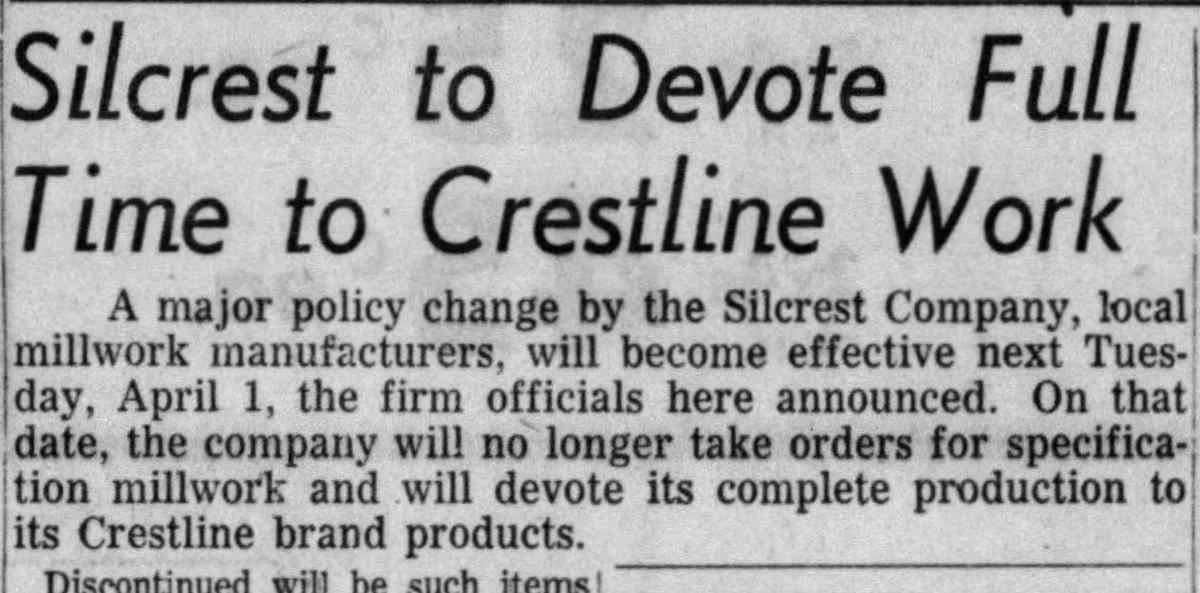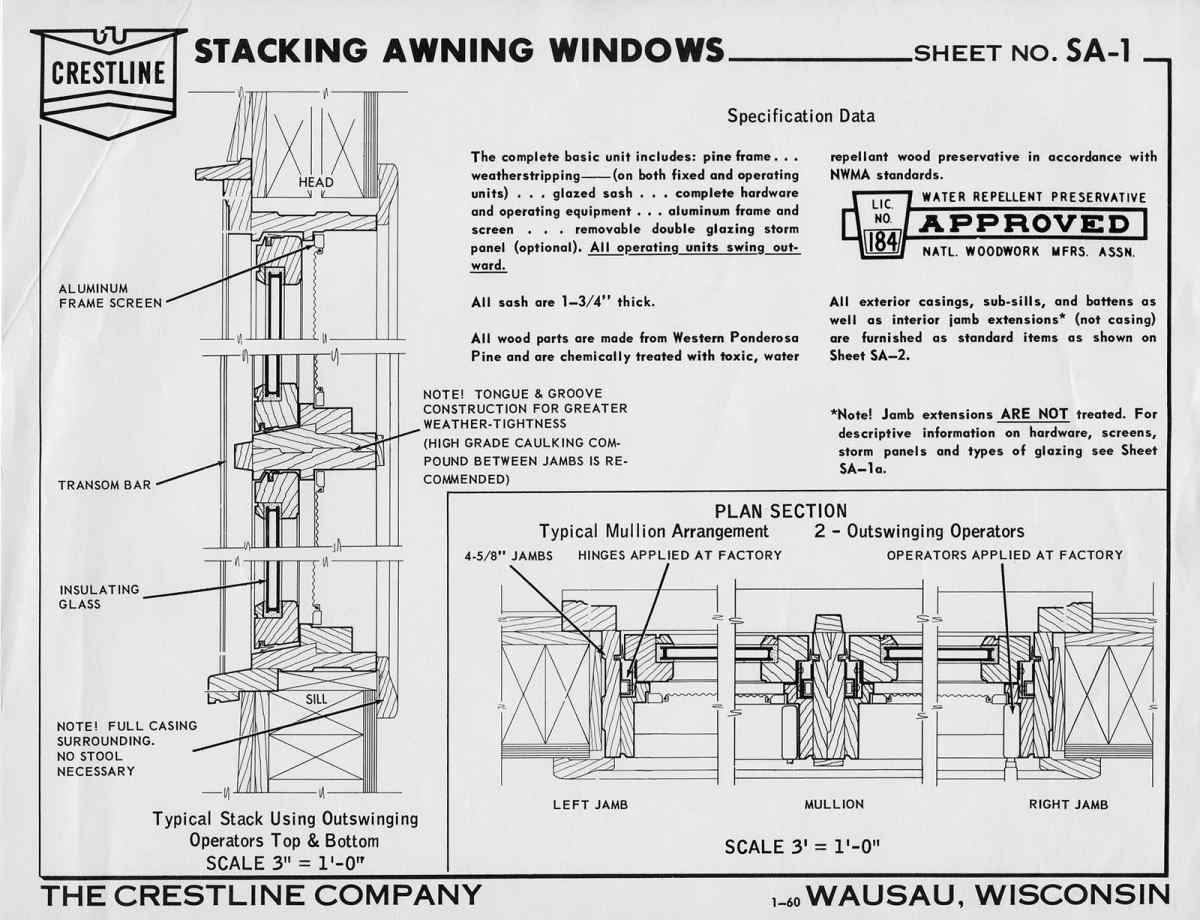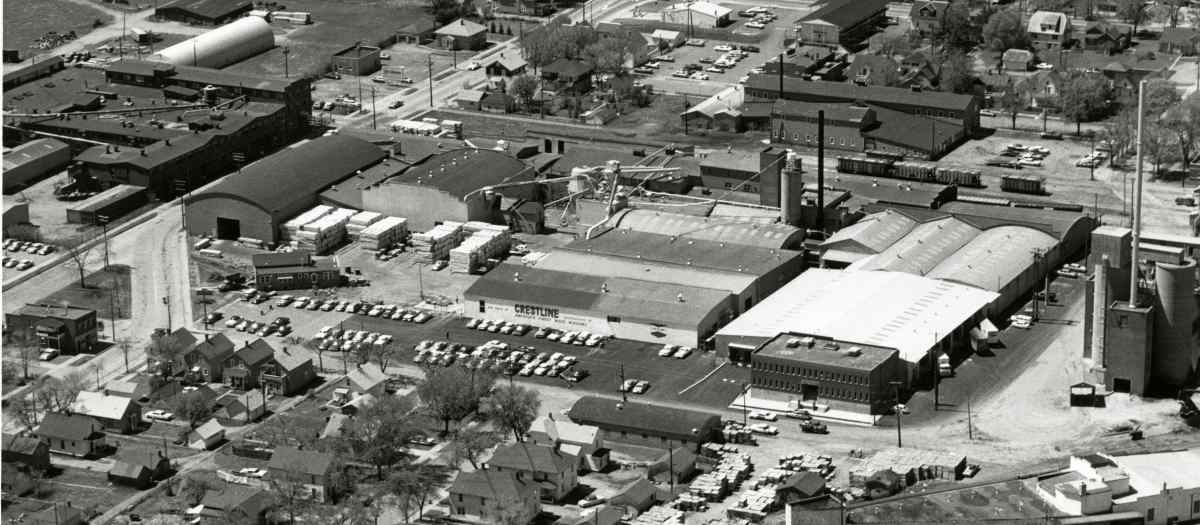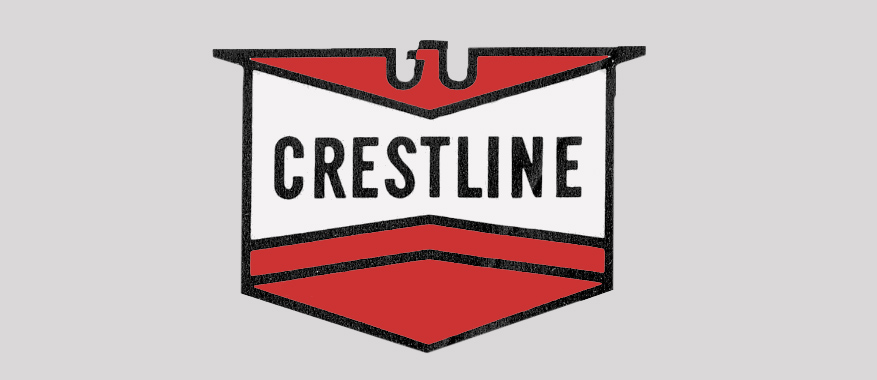Crestline
Silcrest
In 1946, the Chicago-based, Harris Brothers Lumber Company purchased the George Silbernagel and Sons plant in Wausau.
The new owners of Silbernagel & Sons Millwork soon decided a name change was in order. The company's namesake, George Silbernagel had been dead for a decade and his sons were no longer involved after Harris Brothers purchased it. And so in 1951, the company was renamed, "Silcrest." A newspaper article about the change explained that "the first three letters in Silcrest are the same as those in the former name and were retained to enable the firm's customers to keep the transactions with the local company filed in the same place in the office files. The letters spelling 'crest' were selected because the word denotes 'the top.'"1
The Harris Brothers
The Harris Brothers Company that now owned the the Wausau sash and door plant, had a successful past in building. Originally the company had emerged after the World's Colombian Exposition in Chicago in 1893 as a salvaging company. But in the early twentieth century, they shifted their focus to selling the parts one would need to build their own house. With the success of kit houses sold by companies such as Sears and Roebuck, Harris Brothers produced their own catalogs to order kit homes. The philosophy of the new owners (and the changing nature how windows were used) led to changes in the production of windows in Wausau; from the custom sash manufacturing of earlier years towards the creation of line of standardized windows under the brand name "Crestline."

^ Headline from the WDH, March 29, 1958, reflecting the shift in the name
In 1954, Silcrest introduced their "Crestline" brand of windows, and the following year they shifted their focus towards these prebuilt windows as a core part of their business. In 1958 they abandoned the production of "specification millwork" in favor of the Crestline brand windows, and the continuing commercial success of the line led to another name change to "Crestline" to better capitalize on the brand recognition.

^ An example of a drawing that shows the Crestline brand of windows.
Crestline
While their local competition Curtis & Yale folded in 1962 after a recession hit sales of their decorative, high-end windows, Crestline offered a variety of window and door products. And in fact Crestline spent the next decade going though considerable expansion. It went from a small, regional window and door maker to the second largest manufacturer of wood windows in the United States by the 1970s.

^ Crestline's Thomas Street facilities underwent expansions that tripled the floor space over the course of a single decade.
Starting with a pilot branch office located in Ladoga, Indiana in 1961, Crestline also opened facilities outside of Wisconsin to market, distribute, and assemble their products across the Midwest and Eastern United States. From that first facility in 1961, the company opened these branches in Pennsylvania, Iowa, New York and Michigan. Cut stock divisions were also opened in Northern California and Washington by the end of the 1970s.
The success of the company was attributed to a number of factors. Certainly the development of standard, quality window models helped. But the company also used its resources to contribute to the success of those companies that became Crestline-brand distributors with their "factory-distributor" plans.
^ "What Happens When You Say Yes?" a film produced by Robert K. Geisel with Crestline's marketing division, featuring Crestline President Lawrence T. Riordian. The video explained the process to potential partner distributors. Videos courtesy of Mrs. Lawrence K. Riordan.
In the late 1970s, the window company was reorganized somewhat as Harris-Crestline, with greater involvement of the Harris family. But the Chicago-ownership would end in 1981 when Crestline was purchased by Sentry Insurance and reorganized along with the Stevens Point company Vetter into a new company; SNE.
The strength of the Crestline brand meant that the product brand remained after the Crestline company was purchased to make SNE (and even after SNE has been bought and sold over its last quarter century). Today, you can still purchase Crestline windows and doors through the Weather Shield company.

